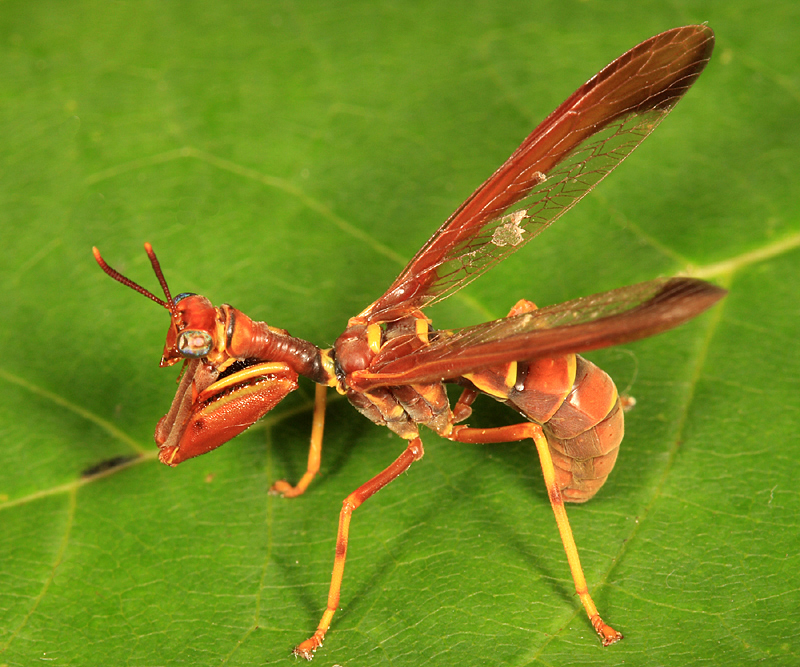
Reproduction & Development
There is not much information concerning the courtship that occurs before mating in C. brunnea. The suggestion is that the male secretes a pheromone from the abdominal tergite gland. This pheromone is a “chemical cue” for females and it reduces the aggression of the females being sought after. A white spermatophore will be found at the end of the female’s abdomen after mating. The female will proceed to lay her up to 3,000 eggs in areas such as forest floors so that the larvae have easy access to spiders. (Zizzari 2010) (Batra 1972)
The larvae of C. brunnea are predators of spider eggs and
gain access to egg sacs in two different ways. They will either
burrow into the egg sac or they will interfere and put
themselves upon the female spider while she is producing the egg
sac. There have been varying results surrounding the question of
whether the spider eggs develop and live; some do and some do
not. Once a larva has entered the egg sac, the spider who just
laid the eggs will likely abandon their eggs, except a rare few
who cannot tell the difference between a larvae-free egg sac and
an infested one. (Redborg 2000)
Once inside the egg sac, the forming C. brunnea will go
through three instars or stages between molts. After those three
periods, the larvae will spin itself a cocoon. After living
i nside of the egg sac for 2 to 4 weeks, the larvae exits as a pharate (temporary phase prior to emergence from a pupa) adult.
Almost immediately after emerging it sheds to its full adult
stage. From there the process begins again. Females can live up
to 40 days while a male lives up to 14 days. (Guarisco 1998) (Batra
1972)
nside of the egg sac for 2 to 4 weeks, the larvae exits as a pharate (temporary phase prior to emergence from a pupa) adult.
Almost immediately after emerging it sheds to its full adult
stage. From there the process begins again. Females can live up
to 40 days while a male lives up to 14 days. (Guarisco 1998) (Batra
1972)
Interested in more information or pictures? Here is a website
that would be good to checkout!
http://bugguide.net/node/view/10133